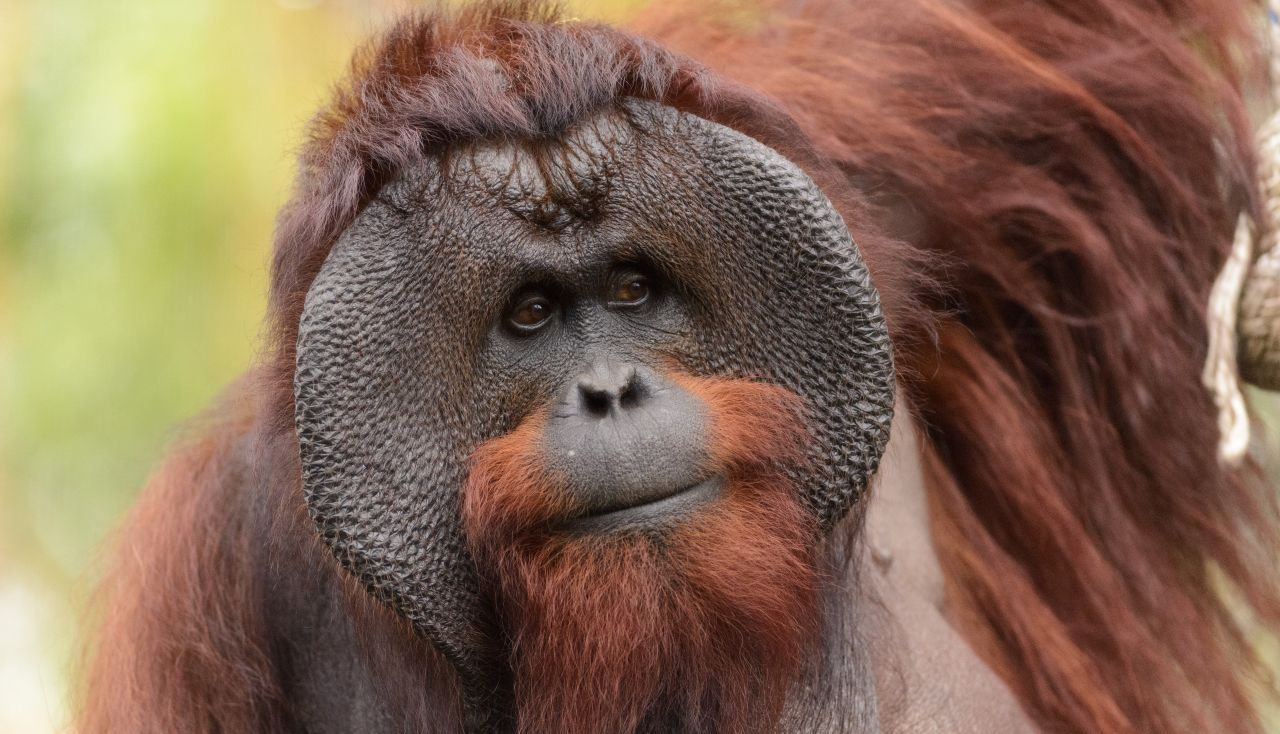
A male Bornean orangutan. Credit: Eric Kilby
Over a span of 16 years, nearly 150,000 orangutans have disappeared from the island of Borneo. That’s about half of the total population on this western Pacific island, and worrisome news for a species that is already critically endangered.
Researchers conducted the survey by counting nests of Bornean orangutans (Pongo pygmaeus), one of three species of the tree-dwelling primates, between 1999 and 2015. Using a combination of visual, aerial, and remote sensing data, they also recorded changes in land use where the animals live to help ferret out potential causes of the decline.
To the researchers’ surprise, most of the orangutans disappeared from forests that were either relatively undisturbed by developing, or logged on a selective basis. This led the research team to conclude that they likely declined due to hunting and killing, says Maria Voigt, lead author of a study published February 15 in the journal Current Biology.
Voigt and the team estimated that the total population of Bornean orangutans fell from about 300,000 to 150,000 individuals between 1999 and 2015. The team estimated that if no major changes are made, another 45,000 will vanish by 2050.
Although illegal, orangutans are opportunistically hunted and killed by locals to eat, or during conflict with farmers, says Voigt, a doctoral candidate with the German Centre for Integrative Biodiversity Research and the Max Planck Institute for Evolutionary Anthropology. They’re also sought after for sale in the pet trade. In such cases, mother orangutans are often killed and their orphans taken. This corroborates other studies that suggest hunting plays a large role in orangutans’ decline. Another team of researchers recently showed that every year more than 2,200 orangutans are killed in Kalimantan, the Indonesian part of Borneo that occupies most of the island’s area.
Clearing forests for agriculture also contributes. The researchers calculated that deforestation, and conversion of land to industrial oil and paper pulp plantations caused nearly 10 percent of the fall off.
One way to slow the decline, the researchers suggest, is to spread awareness about why it is important not to hurt these gentle, orange-haired tree dwellers. “Many people are unaware that even occasional killings could be very harmful since they have this slow reproductive rate,” Voigt says.
Another way is to incentivize better land management. Several studies suggest that orangutans can survive in palm and paper plantations adjacent to forest fragments, at least for a short time. For this reason, partnerships with logging companies and palm oil producers are important. Certification schemes such as the Roundtable on Sustainable Palm Oil and the Forest Stewardship Council attempt to incentivize these partnerships, the authors write, although these efforts remain controversial and their effectiveness unclear.
Fortunately, there may be some good news within the study: Orangutans appear to be slightly more flexible about where they live than previously thought. For example, they can occur in forests that have a certain level of human influence. There are still large and relatively stable populations of the animals in Gunung Palung National Park in Central Kalimantan, Betung Kerihun National Park and Batang Ai-Lanjak Entimau Landscape in Sarawak and in Sabah.
Nevertheless, only 38 out of the 64 remaining sub-populations of orangutans have a population over 100, which experts consider to be the sustainable threshold.
“Our findings are alarming,” the authors conclude. “To prevent further decline and continued local extinctions of orangutans, humanity must act now: biodiversity conservation needs to permeate into all political and societal sectors and must become a guiding principle.”
